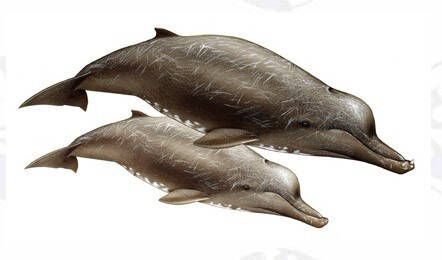Arnoux's Beaked Whale
IUCN
LCBasic Information
Scientific classification
- name:Arnoux's Beaked Whale
- Scientific Name:Arnold's beaked whale, southern four-toothed whale, southern beaked whale, New Zealand beaked whale, southern bottlenose whale, southern porbeagle whale
- Outline:Cetacea
- Family:D.whale
Vital signs
- length:About 12 meters
- Weight:7-10 tons
- lifetime:No verification information
Feature
Diving time is usually between 15 and 25 minutes, usually to a depth of 1000 meters
Distribution and Habitat
A's beaked whales are distributed roughly circumpolarly in the Southern Hemisphere, from the edge of the Antarctic ice (about 78 degrees south latitude) northward to about 34 degrees south latitude. They may be found in the South Pacific, South Atlantic, and southern Indian Oceans, but most observations are recorded south of 40 degrees south latitude. They are most often found in the Tasman Sea, and there have been reports of mass strandings in New Zealand. Sometimes they are forced to spend the winter in Antarctica because they are trapped by ice.
Distributed in cold temperate and polar waters near Antarctica; roughly south of 34 degrees south latitude, the northernmost location of strandings; there are records of them appearing on the Antarctic Peninsula at 64 degrees south latitude. Most strandings occur near New Zealand, and Cook Strait seems to be quite common, especially in spring and summer. Most sightings occur in the Tasman Sea and near the Albert Ross Mountains in the
Appearance
The appearance of the Aberdeen's beaked whale is similar to that of the Beaked Whale, but slightly smaller. The body is long and almost tubular, with a small dorsal fin located at the center and rear of the back. The apex of the dorsal fin is usually blunt and the rear edge is sickle-shaped. The end of the pectoral fin is rounded. The melaton is clearly bulbous and slopes gently to the base of the beak. The mouth is long and curved, with the end curved up. The lower jaw is longer than the upper jaw, so the two triangular teeth at the tip of the beak are exposed even when the mouth is closed. There are two small teeth behind the large teeth, but they are hidden in the mouth. Both sexes have protruding teeth. The body is almost entirely slate to light brown, with the head being lighter in color. As it ages, many long white scars are added to the melaton, back and sides of the body, and older individuals have scars on the abdomen. The scars give the overall appearance a marbled patte
Details
Arnoux's Beaked Whale, scientific name Arnoux's Beaked Whale, is usually easily frightened and difficult to observe, and it is quite difficult to identify it on the sea surface. It seems to be gregarious, and is generally observed in groups close to each other, with a number of less than 10, but sometimes up to 50. Near Antarctica, researchers have tracked a group of about 80 beaked whales for several hours, and eventually they dispersed into small groups of 8 to 15 and disappeared among the ice floes. The recorded diving time is mostly between 15 and 25 minutes, usually diving to a depth of 1,000 meters. A group of whales has been observed diving for more than an hour, during which time they swam more than 6 kilometers. When on the surface, it swims slowly, takes about 15 breaths, and then dives again; the jet is low (almost 2 meters high), slightly tilted forward, and shaped like a branch. The diet of Abel's beaked whale is similar to that of Bates' beaked whale, including squid, octopus, and deep-sea fish. The information on Abel's beaked whale is very limited, and its number is quite rare.

Because of their close resemblance to the Abel's beaked whale, they are believed to be the same species. However, the two are geographically isolated, and the Abel's beaked whale is smaller. Observations of live Abel's beaked whales show that they can be up to 12 meters long; however, all dead specimens investigated are shorter than this length. It is easy to confuse with the southern bottlenose whale, and the two are almost indistinguishable at sea; however, it can be noted that the beak of Abel's beaked whale is longer and the forehead is less round. Both males and females have protruding teeth, which is very unusual among beaked whales; the protruding teeth of old whales may be worn to the gums. Although the body color is dark, it appears light brown or even orange in the sea; this is the result of the microscopic algae - diatoms covering the whole body.
Because scientists have done little research on this species, its reproductive situation is almost completely unknown. Because its related characteristics are similar to those of Abel's beaked whale, it is estimated that the gestation period is also about 17 months.
The frequency of Abel's beaked whale is slightly lower than that of the southern bottlenose whale, which is also distributed in the southern hemisphere, but there are no clear statistics. They have never been captured by humans and do not seem to be in urgent danger of survival.
Protect wild animals and stop eating game.
Maintaining ecological balance is everyone's responsibility!








